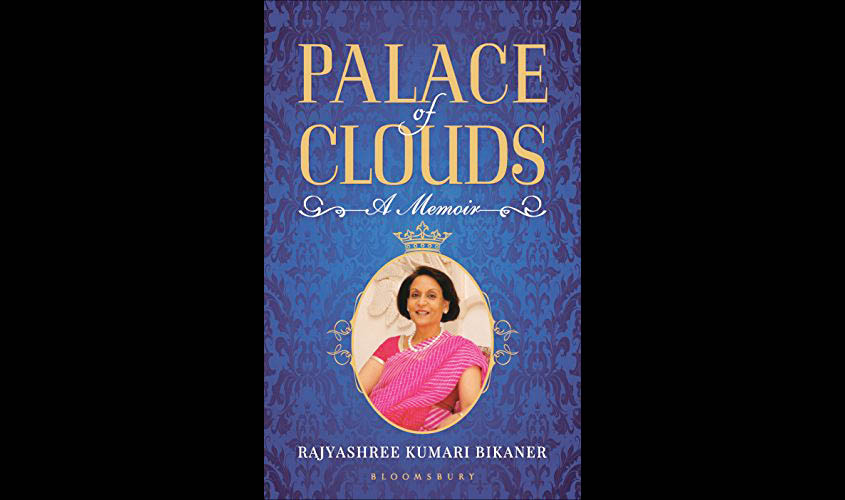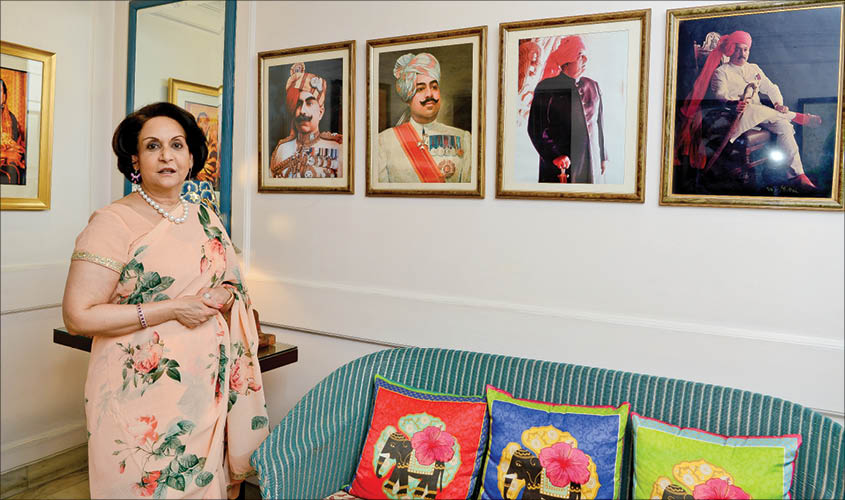Princess Rajyashree Kumari, from the royal family of Bikaner, speaks to Bhumika Popli about her recent memoir, Palace of Clouds, her life in Bikaner, and her career as a professional shooter.
Q. Tell us about your recent book, Palace of Clouds?
A. Palace of Clouds is a semi-autobiographical book. It is a story of my family and my ancestors, and about a Rajput way of life and its culture.This book narrates the romance of the rugged desert kingdom of Bikaner and its Rajput royal family. It is a richly woven wall-hanging encompassing five generations of an aristocratic family’s past and present. Tales of bravery, battles and coronations, the splendour of the royal courts, the culture and traditions that made this Rathore state preeminent in the world, all set against the backdrop of impressive palaces, rugged forts and hunting lodges, the magnificence of the gilded age of the maharajas.
It is the story of my formative years during the ’60s when seismic changes in the world were taking place, which were to take me on an adventurous journey from my home in Bikaner to life in London.
Q. Bikaner is known the world over for its miniature paintings. But few miniaturists are left in the city now. What can be done to promote this form and support the artists who have mastered it?
A. Even today there are many talented artists around, but most of what they produce is for tourist consumption. Mostly, such art forms are passed down the generations. This has now become diluted as the younger generations prefer not to involve themselves in intricate and painstaking work. Linking the art with income generation can motivate young artists to take this art forward.
Q. How far are we from bringing the Rajasthani language into the official languages list of India?
A. It is not just Rajasthani. Many languages of north India are facing the same problem. Rajasthani is a fully-fledged language that has been in use since much before Hindi came into the picture. It has a celebrated history. Yet it is being treated as a mere dialect of Hindi. My father, Maharaja Dr Karni Singhji of Bikaner,during his Parliament days, strongly lobbied for this cause and the demand was supported by others. The issue of recognition for the Rajasthani language has certainly moved forward over the past decades, and is now recognised by the State of Rajasthan. If more authors and poets choose to write in Rajasthani, there’d be better chances of the language being finally recognised nationally in its own right.

Q. You have won many accolades as a professional shooter, including the Arjuna Award in 1969. How were you introduced to the sport?
A. I come from a very long line of great shooters. My great grandfather, Maharaja Ganga Singhji, as well as my grandfather, Maharaja Sadul Singhji,were keen shooters. My father, Maharaja Dr Karni Singhji, represented India at five Olympic Games, world shooting championships and numerous other national and international shooting events. Sports and shooting were pastimes that were deeply rooted in our family—children were introduced to it early. In my case, my father had me shooting with a tiny air rifle from the age of six, and my shooting career took off from there.
Shooting came very easily to me. I imagine it is an inherited talent. Watching me win medals and cups greatly pleased my father. He was a tough coach and made no allowances for soft behaviour. He made us practise in all manner of conditions—high winds and extreme cold. As he said, you are not going to have perfect weather when a match is on. I am very proud and satisfied with my shooting, which culminated in my being given the great sporting honour by being conferred the Arjuna Award. It was earned by my own hard work and talent, though, of course, it was my father who was entirely responsible for fine-tuning and refining that aspect.
Q. Sri Sadul Museum, inside the Lalgarh Palace in Bikaner, is a rich repository of artefacts, miniature paintings, and other royal items now accessible to researchers from all over the world. When was the museum established, and how did the idea come about?
A. The Sadul Museum was my late father’s idea. Bikaner has always been a very progressive state and thus all the written and pictorial materials were intact. My father inherited all of the above and much more in the shape of beautiful miniature paintings, ornaments, medals and trophies, and many other historical artefacts. As a man dedicated to history and committed to looking after the legacy of his ancestors, he wanted to collect all these articles in one museum and preserve them for future generations. It was during the early ’70s that my father asked me to assist him in this venture. It was the beginning of an adventure that went on for many years as slowly, one storeroom after another was inspected and dusty corners explored, and the treasure hunt went on at many properties and over a great period of time. The end result was that a large collection of artefacts was collected and it was then decided to house this in the Sadul Niwas wing of the Lalgarh Palace. Maharaja Dr Karni Singhji committed the museum to the memory of his father and thus Sri Sadul museum came into being, in 1976.
Q. In your book, you have written, “Bikaner is perhaps not strictly speaking a desert like the one seen in the Middle East.” Could you elaborate on this?
A. Before the drive to retard the march of the desert started, there were a great number of virgin sand dunes flowing one after another like scoops of coffee ice-cream. Now, most of them have vanished under intensive farming and habitation and those that remain have been heavily planted to prevent the sand from encroaching on the highway and surrounding areas during the scorching summer months when the region is plagued with horrendous sandstorms. When we were children, we spent many happy hours playing on the sand dunes. In recent years there has been a great deal of planting of trees and shrubs and farming, which has reduced the footprint of the desert. With the coming of the canal and its lift channels, there is now an element of humidity that was not the case before. Slowly, the microclimate is changing.

